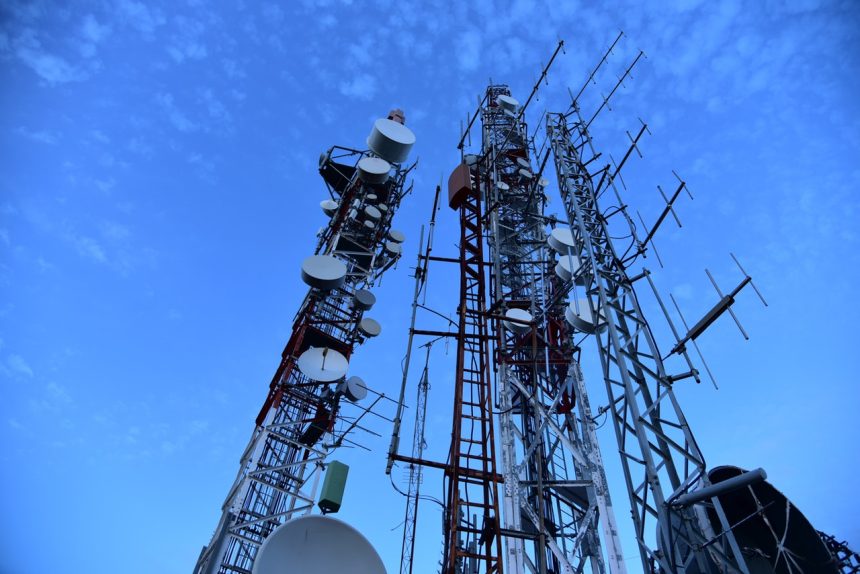A mobile phone is a wireless handheld device that allows users to make calls and send text messages, among other features. The earliest generation of mobile phones could only make and receive calls. A smartphone is a mobile phone or cell phone with an advanced operating system that combines features of a personal computer with other features useful for mobile or cellular communication. Most smartphones provide access to the internet, have touchscreen user interfaces and can run third-party applications.
Over-the-top (OTT) is also referred to as “value added”. Most of us have been using OTT services without actually realizing it. Simply put, OTT refers to the services you use over and above the core network services of your service provider.
Just as smartphones have changed the way we live our lives, they have also revolutionalised OTT services, namely voice and video services over wireless networks, since these devices have multimedia and advanced communication functions.
You now have services that allow you to use your smartphone with the underlying network to make free calls and send free text messages. Here is an example to help better understand the concept. You have a 3G data plan with a mobile operator, from which you have bought a smartphone and provides GSM calls and SMS service.

Then, you use Skype or any other Voice over Internet Protocol (VoIP) service to make cheaper and free voice calls and SMS using the 3G network. Skype here is referred to as the OTT service.
The service provider whose network services are being utilized for the OTT service has no control, no rights, no responsibilities and no claim on the latter. This is because the users should be free to make use of the internet the way they want. The network carrier only carries the IP packets from source to destination. They can be aware of the packets and their contents but can do nothing much about it.
What does this mean for network service providers?
Network carriers have surely been affected by the rise of OTT services, they are experiencing revenue decline due to VoIP OTT operators, from text to voice, video and other OTT services.
According to the London-based research and analytics firm Ovum, the telecommunications industry will lose a combined $386 billion between 2012 and 2018, the firm predicts, from customers using over-the-top (OTT) voice applications.
Certain network service providers feel the rise of OTT services represents a threat to their business and a price hike in the cost of tariffs is an option to recoup dwindling revenue. It actually does not solve the threat in totality. It is pertinent to note that some network service providers have decided to invest in OTT services of their own aimed to increase the host of services they offer to their customers as well as an upgrade of telecoms infrastructure. As mobile phones get smarter, the infrastructure needs to be upgraded to keep up with the endless possibilities offered by these smart(er) phones, seamless video calls/ conferencing, hi-speed data connectivity, crisp audio quality etc.
Major Telecom service providers that have set up OTT services include:
MTN: Video on Demand (Nigeria), Front Row (South Africa)
Airtel: Airtel Zero (India), Nuvu (Nigeria)
Etisalat: C’Me (Nigeria), Myetisalat (Global),
Vodafone: Vodafone Play (Global), Chat+ (Uganda)
Orange: Libon (Global),
Tigo: TigoSports (Bolivia), SmartApps (Global)
Now some users will move completely out of their reach regardless of the networks available OTT services. Some would rather use third party OTT services to make calls, send text messages and stream videos in a Wi-Fi hotspot, which are majorly offered for free.
Conversely, OTT has contributed positively to the telecom ecosystem. For instance, OTT services are the biggest drivers of smartphone uptake in the mass market. A lot of smartphone purchases are largely based on their ability to use OTT apps. Also, video, audio and photo sharing via OTT apps increase the networks’ data traffic importantly as the data used for most media and messages sent are actually paid for twice; data is utilized by both the sender and receiver thus resulting in more data consumption and data revenue for Telcos. OTT services have given rise to a stream of income in terms of VAS and third party billing, the software market has seen a significant rise in terms of Apps and VAS services over the years, programming languages have been developed to suit mobile platforms and mobile adverts revenue is constantly growing.
One can understand the fears of Telco service providers on the effect the OTT services have on their traditional revenue in terms of voice calls and text messages. But limiting or regulating these services affects a wide range of industries; from VAS to social media, mobile advertisements, app development which might have far-reaching consequences. As technology is moving at a steady rate, regulating or banning OTT services takes us back to when our phones could only make calls and send SMS.
![]()
Network service providers can, however, seek ways to ensure they remain competitive and offer value for money by investing not just in OTT services but also VAS products. A good example? Kirusa’s InstaVoice whose service is being included in major telecom operators’ offerings across the Caribbean, Asian, Latin American and African markets. Telcos need to partner service providers OTT or VAS and look for ways to provide better services, but impeding the flow of information via OTT is anti “net neutrality” in nature.
All parties in the industry must come up with creative ways to ensure service providers, OTT service providers and consumers can all get the best value, as history has shown we cannot stop the growth of technology; we can either be overrun by it and become non-existent or be a part of it and continue to open previously unexplored regions.
Article was written by Dr. Inderpal Singh Mumick
Dr. Inderpal Singh Mumick is the Founder, Chairman and CEO of Kirusa, Berkeley Heights, NJ, which he co-founded with colleagues from AT&T, Lucent, and Airtouch. A serial entrepreneur, Inderpal previously co-founded Savera Systems, Murray Hill, NJ, where he was the CEO and the CTO. Before Savera, Dr. Mumick was a Principal Technical Staff Member at AT&T Laboratories, Murray Hill, NJ, a Member of the Technical Staff at AT&T Bell Laboratories, Murray Hill, NJ, and a Research Student Associate at IBM Almaden Research Center, San Jose, CA.










